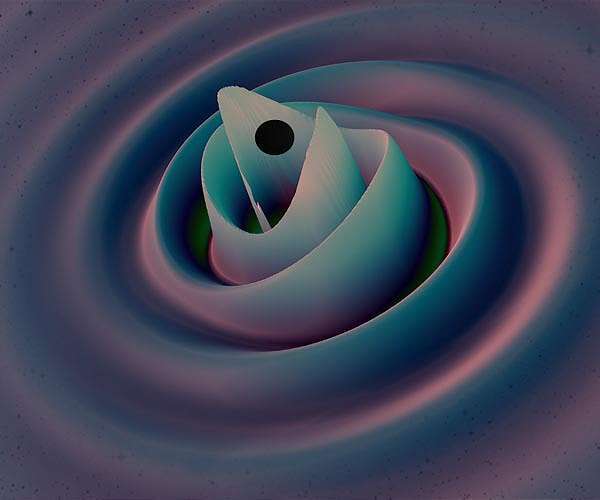9.12.2024

Researchers at Louisiana State University have unveiled a promising method to refine gravitational-wave detection through optical spring tracking. This innovation may enable scientists to observe deeper into the cosmos and gather crucial insights into black hole and neutron star mergers.
Gravitational-wave observatories like the Advanced Laser Interferometer Gravitational-Wave Observatory (aLIGO) are designed to detect minute spacetime distortions caused by distant astrophysical phenomena. These measurements provide an unprecedented view of events that do not emit light, contributing to the study of extreme cosmic occurrences, the nature of gravity, and the universe's origins.
"Quantum noise has become a limiting noise source when measuring gravitational waves," explained Scott M. Aronson, a researcher at Louisiana State University. "By tuning the system to respond at a desired frequency, we show that you can reduce this noise by using an optical spring to track a signal coming from a compact binary system. In the future, this binary system could be two black holes orbiting each other - within our galaxy or beyond."
The research, published in Optics Letters by the Optica Publishing Group, details a proof-of-concept experiment led by Thomas Corbitt in collaboration with the LIGO Laboratory at Caltech and Thorlabs Crystalline Solutions. Their work demonstrates how dynamic optical spring tracking could reduce noise in gravitational-wave detectors.
"This is the first measurement of an optical spring tracking a target signal over time," noted Aronson, the paper's lead author. "This dynamic tracking technique is a strong candidate for quantum noise reduction in the future. Whether in current interferometers like LIGO or next-generation detectors such as Cosmic Explorer, optical spring tracking shows potential to significantly enhance sensitivity."
Developing the Optical Spring
When orbiting objects such as black holes emit gravitational waves, the frequency of their rotation increases, creating a "chirp." By tuning an optical spring to match this frequency, noise can be minimized, enhancing the clarity of gravitational-wave signals.
Aronson and his colleagues executed an experiment to validate the feasibility of dynamic tracking in larger systems like gravitational-wave observatories. Conducted within the framework of the LIGO Scientific Collaboration and the LIGO/Virgo/KAGRA partnership, the experiment tested the interaction between radiation pressure and a cantilever designed by co-author Garrett D. Cole at Thorlabs Crystalline Solutions. Weighing just 50 nanograms, the cantilever acted as a mirror that responded to laser beam radiation pressure, forming an optical spring.
Tracking Gravitational Signals
To simulate a gravitational-wave event, the researchers embedded a target signal into a laser beam phase. Using a second signal to control the position of a movable mirror within an optical cavity, they adjusted the optical spring frequency by varying the distance between the mirror and the cantilever. By moving the mirror to follow the signal's changing frequency - ranging from 40 kHz to 100 kHz over 10 seconds - they improved the signal-to-noise ratio by up to 40 times, significantly enhancing measurement clarity.
Implementing this method in large-scale interferometers will require robust feedback systems to manage optical component positioning. High power levels make precise control even more challenging due to increased radiation pressure. Additionally, prior knowledge of incoming gravitational waves, potentially obtained through proposed space-based detectors like LISA, will be necessary.
"This dynamic tracking technique represents a significant step toward enhancing the sensitivity of gravitational-wave detectors, bringing us closer to unlocking the mysteries of the universe's earliest moments," Aronson remarked. "Future detectors could enable the study of compact object mergers from the first stars or even primordial black holes formed after the Big Bang."
Quelle: SD
